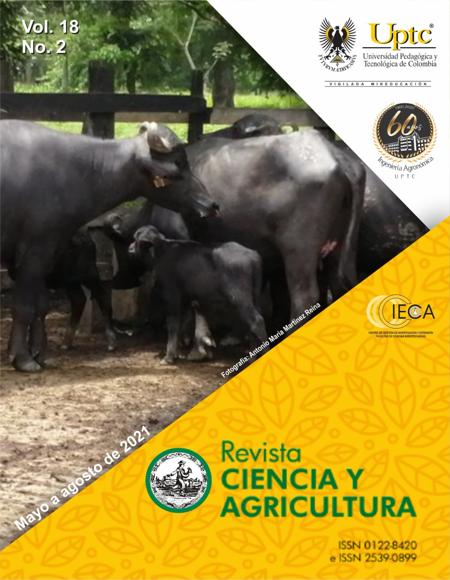Characterization of biosecurity system in poultry farms, in the municipality of Chinácota, Norte de Santander

Abstract
The objective of this study is to quantify the biosecurity aspects that poultry farms present in the municipality of Chinácota must comply with. Initially in the investigation, the poultry farms in the municipality of Chinácota were identified, giving a total of 128 farms, classified as 41 registered with the Colombian Agricultural Institute (ICA) and 87 not registered, of these, a representative sample of 30 was selected. % of each group equivalent to 38 poultry farms distributed in 12 registered and 26 not registered with the ICA. Two instruments were used to collect information, the checklist technique, the method of analysis with the statistical package Spss21 and analysis of the results through the use of graphs or tables; To determine the internal reliability of the checklist, the Kuder Richarson was applied; Finally, the actors' triangulation was carried out. The results obtained by instrument 1 (check list) showed that 50% (19 farms) of the sample meet the established requirements; in the specific items, there is a 40% compliance on average. As for the instrument 2 (Evaluation of socio-economic factors), the lack of knowledge, training, accompaniment to producers and the economic factor for the implementation of biosafety systems can be highlighted as the main limiting factor. Finally, the information was analyzed and interpreted, considering pertinent measures that improve the adoption of the biosecurity system at the farm level, generating a product with quality and safety.
Keywords
Poultry Farming, Regulations, Awareness, Adoption, Implementation
References
Aguilera, M. (2014). Determinantes del desarrollo de la avicultura en Colombia: instituciones, organizaciones y tecnología. Documentos de trabajo sobre economía regional. Volumen (2014), p. 1, 12,50.
Correa. H. (2015). Calidad del agua en la producción avícola. EL MODELO NRC 2001. Universidad Nacional de Colombia.
DANE. (2007). Dirección de Censos y Demografía – DCD. Análisis de contexto de los cambios demográficos.
FAO. 2010. Chicken genetic resources used in smallholder production systems and opportunities for their development, por P. Sørensen. FAO Smallholder Poultry Production Paper Nº 5. Roma.
FAO. (2017). El futuro de la alimentación y la agricultura, Tendencias y desafíos, 131. Tomado de http://www.fao.org/3/a-i6881s.pdf
FENAVI, (2020). Bioseguridad en la industria avícola. Recuperado de https://fenavi.org/wp-content/uploads/2019/02/BIOSEGURIDAD-EN-LA-INDUSTRIA-AV%C3%8DCOLA.pdf
Galindo, S. (2005) Bioseguridad en granjas avícolas. REDVET. Revista Electrónica de Veterinaria, 6(2), 1-17.
OIE, (2018). SALMONELOSIS. Recuperado (2020) de https://www.oie.int/fileadmin/Home/esp/Health_standards/tahm/3.09.08_SALMONELLOSIS.pdf
Resolución 3650 de noviembre de 2014 por medio de la cual se establece los requisitos para la certificación de granjas avícolas de material genético.
Resolución 3651 de noviembre de 2014, por medio de la cual establece los requisitos para la certificación de granjas avícolas de postura y/o levante.
Resolución 3652 de noviembre de 2014, por medio de la cual establece los requisitos para la certificación de granjas avícola de engorde.
Rivera, O. (2019) Bioseguridad en la industria avicola (No. Doc. 19261 2000) CO-BAC, Bogotá).
Rodríguez, L., Pizarro, T. (2018) Ley de Etiquetado y Publicidad de Alimentos: Chile innovando en nutrición pública una vez más. Revista chilena de pediatría, 89(5), 579-581.
SESA, CONAVE, & IICA. (2014). Manuales de Implementación: Bioseguridad en Avicultura, 3–21.
Villagran, S. (2017). Prevalencia de la resistencia a antibióticos a través de la susceptibilidad de Escherichia coli en aves de combate en el norte del Estado de México.
Windhorst, H. (2008) A projection of the regional development of egg production until 2015. World’s Poultry Science Journal, 64(3): 356–376.
